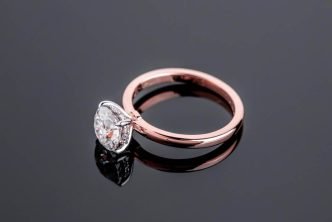Table of Contents
What are tinted lenses and does the lens colour matter?
Tinted lenses are a type of glasses or sunglasses lens that is created by coating a UV-blocking lens with various coloured tints. The tint helps to filter light away from your eyes, but each colour does this in a different way. Some tints can help with enhancing colours and making them more vivid, whereas others may distort colours or reduce glare. There are also blue light blocking lenses available, that are ideal to wear when working at a desk on a computer. Each different lens colour has different benefits, and the right lens for you should enhance your depth perception whilst also reducing any eye fatigue that you feel without hindering your vision in any way.
The tint colour of a lens doesn’t indicate how much UV light the glasses will be capable of blocking. Lenses that provide proper UV protection are treated firstly with a colourless coating that absorbs UV, before then being tinted with colour. The colour of the lenses only matters if you are wanting to filter blue light, as different tints can filter different wavelengths or amounts on the spectrum.
When deciding what colour lenses to purchase, you should consider your lifestyle and when you actually plan to wear these sunglasses. This is because each colour is suited to enhance or improve your vision in various activities, and some can potentially distort your vision if worn in the wrong setting.
What are the different effects of each lens colour?
Green
Green coloured lenses can provide contrast by filtering out blue light, helping to reduce eye strain and prevent glare in bright sunlight. This tint works best when used in sunglasses that are worn for activities such as golf, or for everyday wear.
Grey
Grey is a neutral colour that is good at reducing glare, especially glare from water. This makes it ideal for fishing sunglasses, and it is also helpful at shielding your eyes from bright light. This particular lens tint works well on both cloudy and sunny days, even potentially lessening fatigue. As a result of this, grey is a good all-purpose tint, being suitable for activities like driving.
Blue/Purple
Blue (or purple) tinted lenses will provide enhanced colour perception, and will look good on most skin tones. They can help you to see the contours of objects more clearly, whilst also protecting your eyes from the risks of reflective surfaces like snow. Blue lenses work well in foggy and misty environments, and can be good to wear when skiing.
Red
Red tinted glasses are capable of filtering out some blue light, so they could help with visibility when driving and enhance your eye comfort. Your depth of field may also be increased by red lenses, meaning that they are a good choice for various sports activities, such as skiing.
Yellow/orange
Lenses with lighter coloured tints, such as yellow or orange, are best when worn in conditions where there is moderate to low level light. Similarly to other tints, they will provide the wearer with improved depth perception, and can work well when used in indoor and outdoor sports sunglasses. They may additionally better your visibility of objects, make your surroundings appear lighter and can filter blue light. However, they can sometimes distort your view of colour.
Amber/brown
Amber and brown tinted lenses are great for reducing glare, which can make things look brighter on cloudy days. These particular lenses may also have red hues that can filter blue light whilst improving your depth perception. They are best suited to situations where you need to be able to determine smaller objects from a distance, such as sports like golf or baseball. Brown tints can ease your eyes in sunny conditions, heightening contrast against greener landscapes and blue skies.
What are the benefits of tinted sunglasses?
One of the benefits of tinted lenses is that they can help people who suffer from a sensitivity to light. This sensitivity may be caused by migraines or even a brain injury, so tinted lenses can help to provide comfort. Tinted glasses can also help with visual stress, such as reading difficulties, headaches or other visual problems that occur when exposed to patterns in text. Tinted lenses can be used indoors or outdoors, as they can protect your eyes from UV damage when outside, and can help with shielding your eyes from the light emitted by screens when indoors.
Individuals suffering from macular degeneration may find that wearing black or brown lenses helps, as it can increase visual depth. People who have a problem with migraines will benefit from blue lenses that block out harsh lights that can aggravate their condition. Additionally, if you have problems with blurry vision, yellow tinted lenses are great for softening blue light that comes from screens, and are ideal for people who are exposed to fluorescent light for prolonged periods of time.
What are the cons of wearing tinted lenses?
If you wear tinted prescription lenses all day, you should not have any side effects from this. However, you may find that there is an ‘adjustment period’ when you start using them, especially if you have not worn this type of glasses previously. Similarly, if you have pre-existing eye conditions the lenses may initially affect how you see colours, but this should go away after a while. Another con of tinted lenses is that they can sometimes interfere with your sleep pattern. Wearing tinted glasses indoors often can block the light exposure to your retinas, whose photoreceptors (the cells in your retina that convert light into signals sent to your brain) affect your circadian rhythm.
If you are wearing tinted glasses that are too dark for you, these can become a health risk if worn indoors regularly. This is because your eyes will start to adapt to the darker view seen through the lenses, which can make light exposure seem much brighter than usual and even potentially painful. Additionally, wearing tinted lenses indoors regularly can lead to eye fatigue, which can result in blurred vision, especially if the lenses are of poor optical quality. Prolonged use of tinted glasses indoors can also reduce the retina’s ability to adjust to bright lights, which can worsen photophobia (abnormal sensitivity to light).





